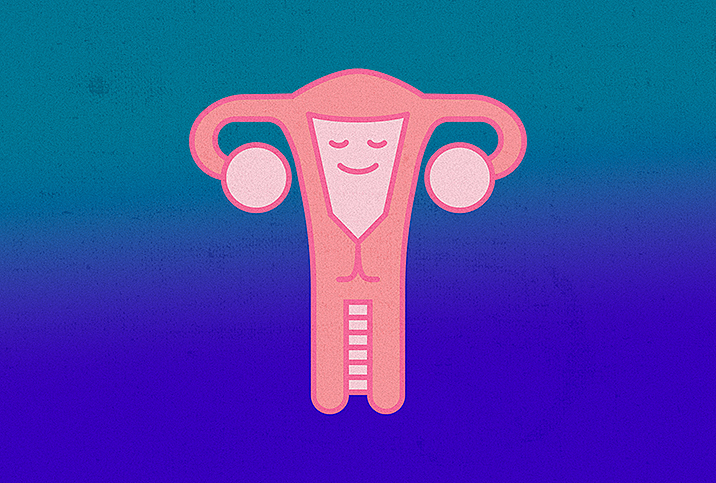Moms Are Leaving the Workplace and It's Not (Entirely) COVID's Fault

Leah Walker and her husband made the perfect plan for after their baby was born. They'd budgeted for her to take six months of unpaid maternity leave. They had daycare lined up and their commute figured out. Their son, Hudson, was born in February 2020, just a few weeks before coronavirus took hold in the United States.
And like many parents of pandemic babies, the Walkers' perfect plan evaporated.
After a year of working remotely and caring for Hudson from home, the Walkers' employer (they both work for the Commonwealth of Pennsylvania) notified them they'd be returning to the office two days a week and had to have childcare even when working remotely.
They scrambled to find daycare for Hudson and worried about exposing him to COVID. Hudson has some health issues and developmental delays, which require regular doctor visits and time off from work. It all was too much, and Walker quit her job as a paralegal.
"I gave up a lot of benefits," said Walker, 29. "I gave up my pension, my life insurance. I definitely worry about that now, and I do lose sleep a little bit over giving those things up."
While every family's situation is unique, Walker's story is not unusual. Roughly half of working mothers take an extended break from work after their maternity leave ends, according to a 2020 survey of working parents. The average break is two years.
And while technically it was the women's decision to take this break, 57 percent of the surveyed moms said they felt they didn't have a choice.
Roughly half of working mothers take an extended break from work after their maternity leave ends.
"For many women, after they have a child, there comes a point where they're forced to choose between their family and their career because of an uneven distribution in household and childcare responsibilities," said Georgene Huang, CEO and co-founder of Fairygodboss.
In 2020, 9.8 percent of U.S. families included an unemployed person, twice the 2019 figure, according to the Bureau of Labor Statistics' 2020 Employment Characteristics report. In married-couple families with young children, they were most often moms.
Mothers of young children have lower employment participation rates than those with older kids: 65.8 percent for mothers with children under age 6 versus 75.4 percent of moms with kids ages 6 to 17.
So why do so many new moms stop working? The common reasons—a lack of paid leave and childcare—aren't pandemic-specific, and they aren't new.
The paid-leave problem
The United States is one of six countries in the world—and the only wealthy, industrialized one—with no federal paid leave. Democrats initially proposed 12 weeks of paid family and medical leave in the spending bill currently being debated in Congress, but that figure shrunk to four, and was eventually removed altogether.
The federal Family and Medical Leave Act allows employees to take up to 12 weeks of unpaid leave—if they qualify. Leave policies are most often left up to employers, states or even municipalities. Currently, only nine states and the District of Columbia have paid family- and medical-leave laws, and about 40 percent of employers offer paid family leave.
Paid-leave policies may seem incompatible with encouraging moms to return to work, but research has found women with paid leave have the highest employment rates before, during and after pregnancy.
"By allowing all caregivers to take time away from work, the burdens of childcare and the all-too-often accompanying career setbacks are no longer placed on mothers, but are more equally distributed between both parents," Huang explained.
The childcare quandary
When mothers do want to return to work, families often struggle to find and afford quality childcare. Most married-couple families spend 10 percent of their annual household income on childcare, while single-parent families spend more than 30 percent (though this largely depends on where you live).
Almost 60 percent of daycare centers closed during the pandemic. While some reopened, others stayed shuttered. The childcare crisis disproportionately impacts women, both as parents of kids who need care and as employees of these centers. Nearly 95 percent of childcare workers are women.
"There's a reason there's not as many daycare workers," said Corinne Kodama, Ph.D., policy analyst for Women Employed in Chicago. "It's because they don't have a decent wage and they don't have benefits." In 2019, the median hourly wage of daycare workers was $11.56.
Congressional Democrats are talking about childcare as infrastructure, as crucial to our economy as roads and bridges. "Transportation is infrastructure to get you to work, childcare is infrastructure to allow you to go to work, and paid leave allows you to have a baby and still have a job," Kodama said.
'I think over the last year and a half, we have proven we can still be productive and do all of these other things when we're not in an office.'
Emily Lewis, 31, recently left her job as a communications specialist for a healthcare nonprofit in New Orleans. Her daughter was born in July, and she worked remotely during her pregnancy. But with a return to office imminent, Lewis quit shortly after finishing her maternity leave. Daycare, particularly during a pandemic, wasn't an option for her family.
Lewis plans to return to work, but flexibility and fully remote work are absolute musts so she can continue to stay home with her daughter. She'll hold out until she finds the right fit. "I think over the last year and a half, we have proven we can still be productive and do all of these other things when we're not in an office," she said.
Still, it's often the lowest-paid workers who don't have the option of remote work or have access to paid leave. "A lot of these people are women of color, and that just increases the wealth gap, the opportunity gap and the pay gap," Kodama said.
"When women are not in the workforce, that's a lot of people not in the workforce," she added. "It is an economic issue, not just a personal issue and a moral issue."


















